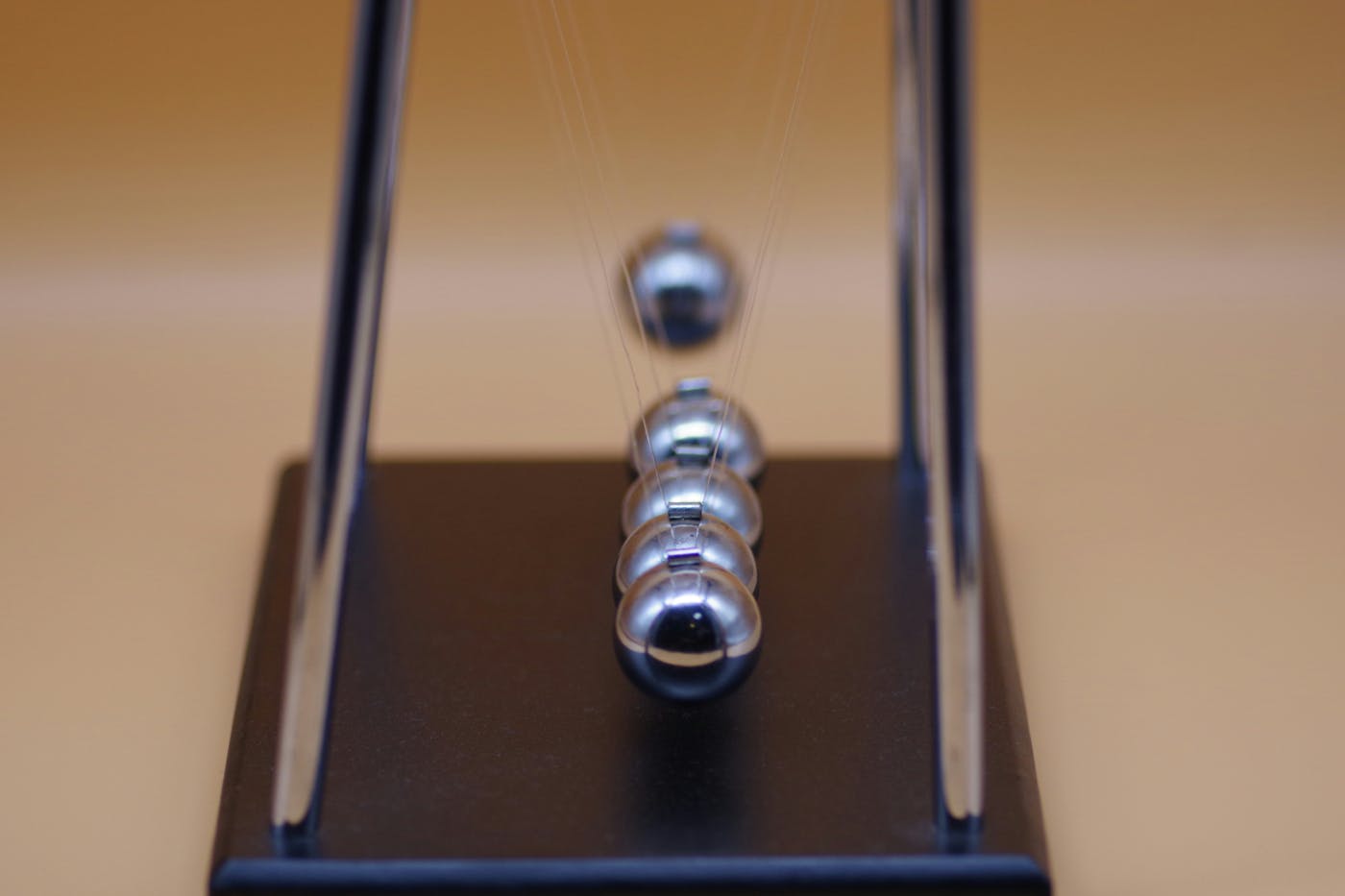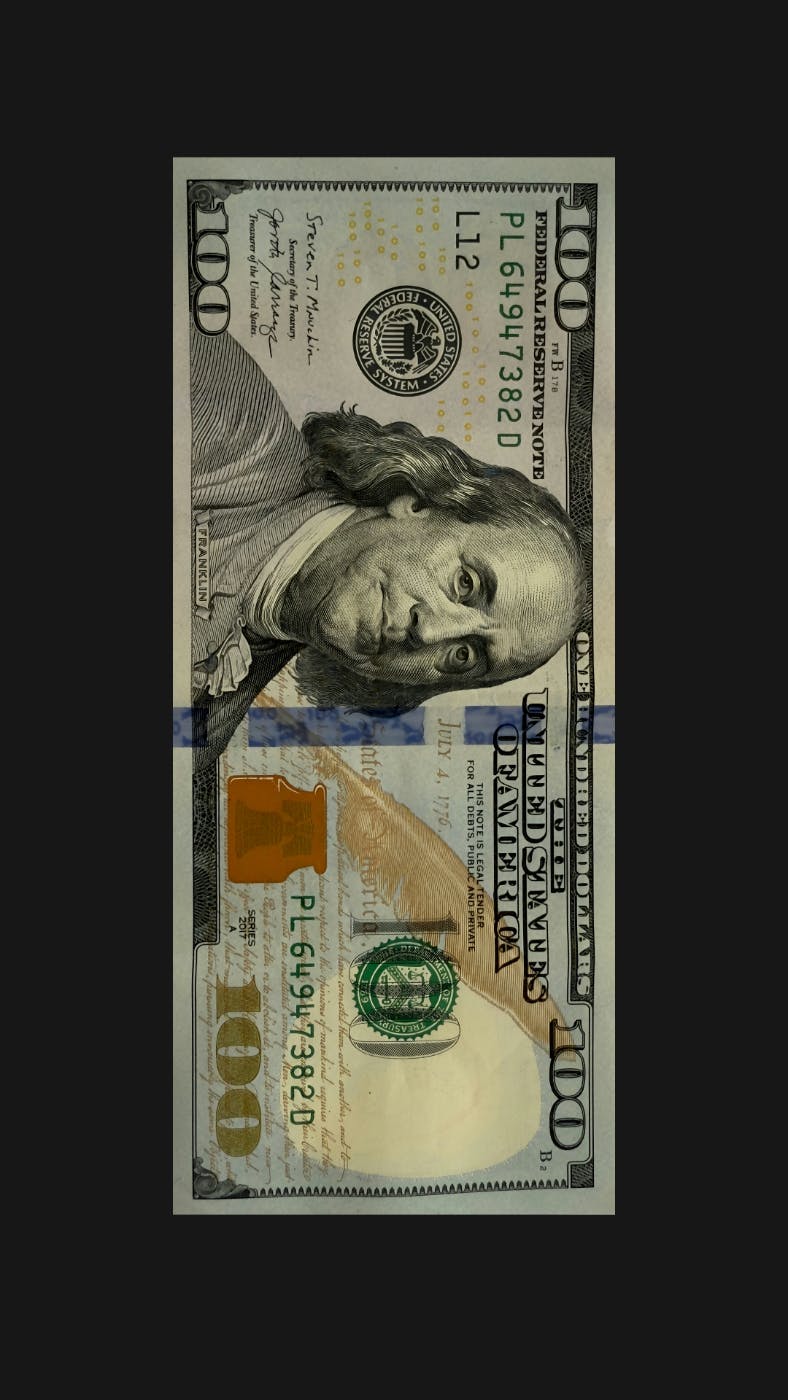
A new design philosophy is emerging, often called “quiet design” or, in more strategic marketing circles, “whisper-branding.” These brands operate under the principle that subtlety is not weakness; restraint is its own form of power.
Take a moment and watch The Silence of the Lambs. Anthony Hopkins’ performance as the serial killer, cannibal, all-around creepy-as-hell guy was compelling. So compelling, in fact, that he won the Academy Award for Best Actor—a well-deserved award, some say. There are interesting things to notice when contemplating this film. Hopkins won the Oscar, yet his total screen time in the film was just 16 minutes. The film runs one hour and fifty-eight minutes, of which Hopkins is on screen for only 16 minutes. But whenever you think of that film, you hear his voice, see his face, and feel as though the film is all about him.
The second thing to notice about his performance is stillness. He is very still and very quiet. Lecter doesn’t yell, doesn’t move about a lot. He stands still, sits still, and when he moves, it’s calculated and deliberate. This is a performance based on constraint and control. He is never out of control. In the scene after Lecter kills the guard and wears his face as his own, two people are talking, and one says Lecter’s heart rate didn’t rise while he was killing people. His heart didn’t race, he didn’t fidget or worry—he was controlled and still even while he killed.
Hopkins has talked about the vocal choices he made, but he said Lecter’s stillness just felt right. He didn’t need to scream or “perform” like a madman; he was almost like tofu—he absorbed what everyone else said about him, and it all manifested as stillness and control. This is what made Lecter so terrifying. He seemed normal. He seemed very intelligent, very cultured, but deeply, deeply normal.
Yes, the adage goes that the squeaky wheel gets the grease, but the quiet wheel doesn't go unnoticed; it’s appreciated for its continued work and service. If Lecter were a brand, he’d be quiet, understated, probably a luxury brand—but he would not be doing loud, attention-grabbing marketing. And sometimes, that’s how a brand is best seen and heard: quietly, controlled, and… normal.

The Rise of Quiet Design / Whisper-Branding
If the 2010s were the decade of loud branding—think neon-colored logos, maximalist packaging, and social media accounts screaming for attention—the 2020s are quietly flipping that script. A new design philosophy is emerging, often called “quiet design” or, in more strategic marketing circles, “whisper-branding.” These brands operate under the principle that subtlety is not weakness; restraint is its own form of power. They do not rely on visual noise, flashy gimmicks, or over-the-top marketing to capture attention. Instead, they earn notice through precision, consistency, and, paradoxically, the deliberate absence of excess.
Quiet design is recognizable by a few key traits: minimal logos, muted or monochrome palettes, generous use of negative space, clean typography, and an overall sense of calm or control. There’s an intentional reduction in everything that could be considered “decorative fluff,” allowing the brand’s core personality to shine through without shouting. It’s a kind of visual minimalism with a psychological punch. Every curve, every color choice, every empty space becomes part of the narrative, signaling thoughtfulness, confidence, and, often, a premium positioning.
Several cultural and market forces are converging to make whisper-branding more than just a design trend. For one, consumer attention spans are shrinking. In a sea of social feeds, pop-ups, notifications, and endless content, over-the-top visuals can overwhelm rather than persuade. Subtlety, by contrast, feels like a relief. It’s a quiet exhale in a world of visual chaos. It communicates that the brand doesn’t need to scream to matter; it knows its identity and trusts that consumers will notice.
Another factor is cultural sophistication. Across industries, consumers increasingly value authenticity, craftsmanship, and intentionality. Minimalism signals that a brand is confident enough to remove the nonessential, that it prioritizes quality over quantity, and that it respects the intelligence of its audience. It’s a visual shorthand for trustworthiness and refinement. Luxury brands have long leaned into this, but whisper-branding is bleeding into mainstream categories as well, from tech startups to lifestyle products to professional services.
Finally, the digital landscape itself is shaping the trend. On small screens, cluttered visuals are overwhelming and easily ignored. Brands that embrace minimalism can be more adaptable and flexible across digital platforms. A subtle logo or restrained color palette scales well, translates easily to apps and websites, and maintains its impact whether viewed on a tiny phone screen or a full-size billboard. Digital constraints, ironically, have created the perfect breeding ground for whisper-branding.
But perhaps the most interesting thing about this shift is psychological: quiet brands feel deliberate. There’s a story behind every choice, a reason for every restraint. This mirrors the Lecter principle from the opening: stillness and control communicate mastery, authority, and even magnetism. Consumers may not consciously notice every detail, but they sense it. The restraint communicates confidence. The personality doesn’t shout, yet it leaves an impression that lasts.
Whisper-branding is not about hiding; it’s about strategic focus. It’s about saying just enough—and only what matters. For brands, this can be transformative: in a noisy marketplace, those who master the art of quiet can become unmistakably, memorably, and subtly dominant.

Why Minimal Design Can Be More Impactful
Minimal design is often misunderstood. Many assume that loud, cluttered, or flashy visuals automatically grab attention, while restraint risks invisibility. But the reality is far more counterintuitive: simplicity can amplify personality, memorability, and influence. A minimal brand doesn’t compete with noise—it transcends it. In a world where every channel is crowded with stimuli, subtlety becomes a differentiator.
At its core, the impact of minimal design is psychological. Humans are wired to respond to clarity. Our brains crave patterns, coherence, and digestible information. Overly busy visuals can overwhelm cognitive processing, leaving viewers fatigued or disengaged. In contrast, clean, simple design directs attention precisely where the brand wants it. It creates breathing room, a visual pause in the chaos, and the mind fills in the rest—often amplifying the brand’s personality in the viewer’s imagination. Think of it as design with built-in suggestion: less shown, more inferred.
There’s also an emotional element. Minimalism signals confidence. A brand that strips away the unnecessary conveys mastery and control. It says: We don’t need to rely on gimmicks to prove ourselves; our essence is strong enough to speak for itself. This mirrors the Lecter principle we explored earlier—control, stillness, and deliberateness are inherently commanding. Consumers may not consciously articulate why a minimalist brand feels powerful, but they perceive it as deliberate, intelligent, and trustworthy.
The memorability of minimal design comes from the same principle. Consider Apple, whose sleek, stripped-down visuals have become synonymous with innovation and premium quality. The logo is simple, the interface uncluttered, and yet the brand has one of the most powerful identities in the world. Or look at luxury fashion brands like Celine or Hermes: their logos and campaigns are restrained, yet instantly recognizable, communicating exclusivity and refinement without a single shout. The quietness paradoxically ensures the brand’s voice carries further.
Another example comes from tech startups and lifestyle brands. Companies like Muji or Everlane embrace neutral tones, minimal packaging, and no-fuss messaging. These brands don’t interrupt with visual noise; they let simplicity communicate honesty, transparency, and accessibility. By doing less, they achieve more. Their personality is clear, yet it feels effortless—like a thought-out design that invites participation rather than demanding attention.
Minimal design also benefits from scalability. Across platforms—social media, web, mobile apps, packaging—a simple visual system maintains clarity and legibility. Bold, loud designs may lose nuance when shrunk to a phone screen, whereas a minimal logo, strategic use of negative space, and clean typography can carry the brand identity consistently. Consistency, in turn, reinforces recognition, credibility, and trust.
The last point to consider is intentionality. Minimal design communicates that every choice is deliberate. Every shape, color, and typeface has a purpose. This level of precision communicates mastery and sophistication, creating a sense of respect and admiration from the audience. In a cluttered world, brands that are intentional in their restraint are often the most memorable, because they feel thoughtful rather than reactive.
In short, loud visuals can grab attention momentarily, but minimal design leaves a lasting impression. By embracing simplicity, brands can convey authority, sophistication, and personality in ways that shoutiness never can. Quiet design doesn’t dilute the message—it amplifies it, allowing the brand to speak powerfully without ever raising its voice.

Elements of Maximal Personality in Minimal Design
Minimal design is powerful, but minimalist visuals alone aren’t enough to convey a brand’s personality. Personality emerges not from the quantity of design elements, but from the intentional orchestration of every element in harmony. Think of it like music: a single note can be hauntingly beautiful if it’s part of a carefully composed melody. Similarly, minimal design requires deliberate orchestration to express character, convey values, and connect emotionally with the audience.
1. Logos: Subtlety with Meaning<br />A minimalist logo isn’t just a stripped-down icon—it’s a visual shorthand for personality. Clever use of negative space, geometric precision, or abstract symbolism can communicate complexity without clutter. The FedEx logo, with its hidden arrow, is a classic example: simplicity masks an intelligent, almost playful personality cue. The secret is that minimalism allows room for discovery; the viewer engages with the logo mentally, filling in the story themselves. That engagement strengthens memory and loyalty—without the brand ever shouting.
2. Color and Typography: Nuance in Choice<br />Muted palettes, restrained color schemes, and thoughtful typography are the quiet workhorses of personality. A single carefully chosen hue or typeface can signal sophistication, approachability, or innovation. Everlane’s neutral tones communicate transparency and authenticity; Celine’s stark black-and-white palette signals high fashion, exclusivity, and refinement. Typography, too, carries emotional weight: sans-serif fonts can feel modern and clean, serif fonts can communicate trustworthiness and heritage. Each choice is a whisper that builds the brand’s voice across every touchpoint.
3. Storytelling: Voice Without Shouting<br /> Personality isn’t confined to visuals. Messaging, tone, and narrative play equally important roles in whisper-branding. Minimalism extends into language: concise copy, intentional pauses, and evocative phrasing convey confidence and sophistication. Muji’s communications, for example, are simple, clear, and almost meditative. The brand doesn’t need hyperbolic slogans; its personality emerges organically through consistent, restrained messaging.
4. Cohesion Across Touchpoints<br /> Perhaps the most critical element of personality in minimal design is consistency. Every design choice—from packaging to web interface to social media presence—works as part of an interconnected system. This is where we begin to edge into the idea of a brand ecosystem without naming it outright: minimal elements ripple across all interactions, creating a coherent personality that is greater than the sum of its parts. When every element supports the others, subtlety becomes scalable; the quiet note becomes part of a symphony that resonates with the audience.
5. Small Details, Big Impact<br />Finally, personality often resides in small, intentional touches. A unique corner radius, an unexpected micro-animation, a slight tonal shift in copy—these are the whispers that make a brand feel alive. Minimalism doesn’t erase detail; it amplifies it. Every element is an opportunity to express character, and every choice communicates that the brand is deliberate, thoughtful, and confident in its identity.
Minimal design, then, is not a lack of personality—it is personality curated and amplified through restraint. The brand’s story emerges from the sum of small, deliberate decisions, orchestrated in harmony to communicate an identity that feels cohesive, confident, and memorable. And when these elements interact across all touchpoints, you begin to see the faint outline of a living system: a subtle ecosystem of brand personality taking shape, quietly powerful yet unmistakably present.

Risks & Missteps in Quiet Branding
Quiet branding is powerful—but it is not without pitfalls. Restraint, minimalism, and subtlety may look effortless on the surface, but executing them effectively requires discipline, insight, and a sophisticated understanding of both the brand and its audience. Missteps are easy to make—and when done wrong, minimalism can backfire, leaving a brand invisible, forgettable, or worse, misunderstood.
1. Mistaking Minimalism for Laziness<br />One common error is assuming minimal design is inherently easy. Stripping away elements does not automatically create elegance or clarity. In fact, it often requires more effort than maximalist approaches. Every visual decision must be intentional; every omission carries meaning. A poorly executed minimalist logo, website, or package can seem barren, generic, or uninspired. For minimalism to work, restraint must be married to strategic insight—every element, and every space, must serve the brand’s personality and purpose.
2. Losing the Emotional Connection<br />Another risk is creating visuals that are so restrained they feel cold or detached. Minimalism should never be about removing personality—rather, it should amplify it. Brands that focus too much on aesthetics at the expense of narrative or emotional resonance risk creating a design that communicates “quiet” but not “alive.” The audience may notice the simplicity, but they won’t remember the brand or feel compelled to engage. Emotional cues—tone, story, micro-interactions—must always be integrated to give life to minimal design.
3. Overlooking Context<br /> Context is critical. A design that works beautifully in one medium may fail in another. A muted color palette might look elegant on a website, but appear washed-out in physical signage. Minimalist typography might read clearly on a desktop screen but disappear on mobile. Effective quiet branding accounts for context at every touchpoint, ensuring that subtlety never compromises legibility, accessibility, or clarity.
4. Forgetting Consistency Across the Ecosystem<br />Minimalism’s strength lies in its coherence—but coherence is only effective when applied consistently. Every interaction a consumer has with the brand—website, packaging, social media, physical spaces, and beyond—must reflect the same thoughtful restraint. Without this consistency, the quiet personality becomes fragmented, and the intended sophistication can feel forced or confused. It’s here that brands can begin to see the seeds of what we might call a “brand ecology”: the interconnected system of touchpoints working together to express a unified identity. Without attention to that system, subtlety can fracture into invisibility.
5. Overcomplicating the Minimalist Concept
Paradoxically, another misstep is overthinking minimalism itself. Brands may get trapped in trying to engineer subtlety, adding complex hidden meanings or intricate details in a bid to appear sophisticated. While intentionality is crucial, subtlety is most effective when it feels natural and effortless. Forced minimalism often reads as artificial, undermining trust and alienating audiences who value authenticity.
Ultimately, the lesson is that quiet branding is deceptively complex. It demands restraint, discipline, and strategic foresight. When done well, minimal design allows personality to shine more vividly than any shouting campaign ever could. When mismanaged, it risks invisibility, detachment, or misinterpretation. The challenge—and the opportunity—is to navigate this balance carefully, creating a brand that communicates powerfully through stillness, precision, and coherence.
pic
Summing Up
Quiet branding is more than a trend; it is a philosophy. From Anthony Hopkins’ calculated stillness in The Silence of the Lambs to the restrained elegance of brands like Apple, Celine, or Muji, we see that power doesn’t need to shout. Personality, memorability, and influence can emerge from restraint, discipline, and intentionality. A brand doesn’t have to fill every space, shout over the noise, or dominate every channel to make an impact. Sometimes, the most commanding presence is the one that whispers.
Minimal design amplifies what matters by removing what doesn’t. Every element—logo, color, typography, copy, interaction—is deliberate, creating clarity and focus. Personality emerges from orchestration rather than excess. The audience is invited into the story, connecting emotionally with cues that feel effortless yet precise. This is the essence of whisper-branding: quiet, confident, and memorable.
But quiet branding is not simply about aesthetics. Its true power lies in the interconnectedness of every touchpoint. When every decision is deliberate, when every element interacts seamlessly with the others, the brand becomes more than a logo or a campaign—it becomes a system. The minimal gestures ripple across every interaction, creating cohesion, consistency, and resonance. In essence, this is the beginning of a brand ecology, a concept we explore at ThoughtLab: a living, breathing network of touchpoints, each reinforcing the others to create a unified personality. By thinking systemically, brands can harness restraint to speak more loudly than any shouting campaign ever could.
In a noisy, cluttered marketplace, brands that embrace quiet, controlled, and deliberate design are the ones that stand out. Not by yelling, but by creating a presence that is confident, cohesive, and alive. Just as Hopkins’ performance lingers long after he leaves the screen, a brand designed with stillness, precision, and thoughtful orchestration stays with its audience, leaving a lasting impression that feels effortless but is anything but accidental.
Minimal logos, restrained palettes, subtle typography, and curated storytelling may appear simple, but their impact is profound. They are the tools of brands that understand the interplay between personality and environment, that see their identity not as a collection of isolated elements, but as a network of interdependent interactions—a brand ecosystem waiting to be noticed. And when that ecosystem is carefully nurtured, the brand doesn’t just exist; it resonates. Quietly, confidently, and memorably.

